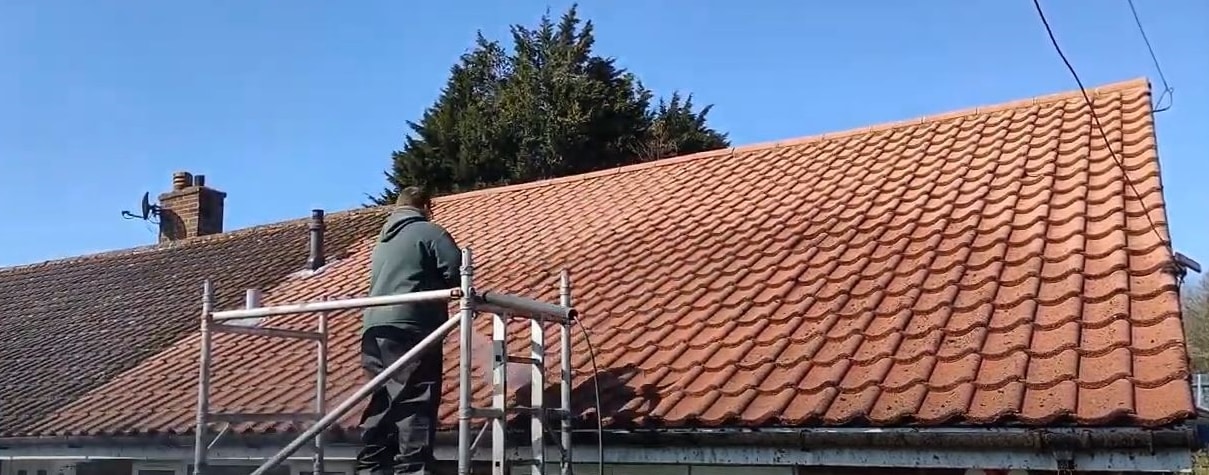Five Classic Patterns Reimagined in Contemporary Wallpaper
9 min read
5 Classic Styles Reimagined in Modern day Wallcoverings
#1 Paisley

In her posting “Paisley: The story of a typical bohemian print” for BBC Society, Lindsay Baker gives a brief historical past of the “iconic motif.” Baker writes that paisley commenced in Historic Persian and India, but would later on travel to Europe in the 1700s, “adorn the bandanas of cowboys” and “usher in the hippy period.” Unique paisleys showcased a “droplet-like motif” known as the boteh, which was “thought to have been a representation of a floral spray merged with a cypress tree.” The latter is an ancient image for “life and eternity.” Starting in the eighteenth century, the East India Company carried paisleys from Asia and the Middle East into Europe. Immensely well-known in the Uk, shawls that includes the pattern ended up developed in Wales and Scotland. Scotland’s city of Paisley in Renfrewshire is still popular for its “Persian pickles” print.
Decades later on, artists, designers and writers in Victorian England reworked the print into a image of insurrection. Lindsay Baker writes that “William Morris and the Arts-and-Crafts motion tailored the print, with William Holman Hunt and other Pre-Raphaelites depicting luxurious paisley textiles in their paintings.” In the early twentieth century, paisley “became an integral aspect of the Aesthetic Motion and the Art Nouveau Movement – and shorthand for refined, arty bohemianism.” Although it fell out of trend involving the 1920s and the 1950s, a resurgence transpired in the 1960s. For the duration of this time, paisley was “emblematic of the ‘summer of love’ and the typically eye-watering aesthetic of the psychedelic era.” Quoting designer Veronica Etro, Baker praises paisley’s longevity. Etro itells Baker that paisley “‘always remains captivating, exotic and great at the same time.’”
Present-day Paisley Prints We Enjoy

There are 3 up to date paisley prints that specifically stand out. Initial is the Shirala Paisley from Schumacher in their Delft and Rose colorway. Fragile and diligently detailed, this paisley options alternating rows of two distinctive patterns. Both of those curl softly at the idea with a series of little bouquets during. One particular is a one form even though the other consists of a secondary droplet with a dense border inside of the very first droplet. In accordance to Schumacher, this paisley is based mostly on a “traditional Indian block print.” Each timeless and perfect for today’s interiors, Schumacher’s Shirala Paisley is composed of “intricate, multicolor floral patterns” neatly arranged in a grid. This sample is from their Palampore collection, which features a collection of other stylized, vintage-motivated prints and models.
The other two contemporary paisleys we love are the Kashmir Paisley by Peter Dunham and the Kiribati Ikat Print from Schumacher. Schumacher’s Kiribati Ikat print was encouraged by traditional ikat dyed materials from India. It options a series of abstract paisleys and geometric diamond designs, accessible in vibrant colorways like aquamarine and coral. Previous is vintage paisley in refreshing colorways like shiny green and ivory slate. According to Peter Dunham Textiles, the brand’s Kashmir Paisley “was impressed by a block print that Peter discovered as a teenager backpacking in India.”
#2 Chintz

Right before the Dutch and Portugese exposed European designers and craftsmen to the floral sample, chintz was rendered substantially much more merely in 17th century India. In her report “Chintz 101: A Primer for the Print That is Again in a Huge Way” for Vogue, Virginia Van Zanten offers a transient background of chintz. Van Zanten writes that chintz began as a “glazed Calico, a type of cotton originally from Calicut, typically printed or painted with large florals.” By the late 1700s, chintz had manufactured its way to England and France. Chintz was so well-known in England and France that the governments of equally nations around the world “temporarily banned its sale to secure their individual textile mills,” which could not recreate the pattern on their have. The palace at Versailles disregarded the ban, which is why royal fashions and furnishings from the period of time function pretty a little bit of chintz.
It was about this time that chintz turned well known in the American Colonies as well, with Washington adorning the bedrooms of Mount Vernon with floral wallpapers. In the nineteenth century, European textile mills and wallpaper brands ultimately commenced generating chintz. Having said that, these chintz styles ended up “Westernized from conventional Indian tree of daily life imagery to much larger and looser floral motifs.” At the time, chintz wall coverings and upholstery materials were coated. Since of this, they had been uncomplicated to retain and incredibly common with “the cleanliness-obsessed Victorians.” Nowadays, “just about any large floral sample is dubbed chintz,” no matter if it is glazed or not. Chintz eventually fell out of favor in the 1950s. Even though some designers, decorators and consumers caught with chintz by way of the 1960s, it did not regain prevalent acceptance till the 1980s. Now, chintz wallpapers are back in trend many thanks to inside design and style trends like Grandmillennial, “granny chic” and French state.
Up to date Chintz Prints We Appreciate

Right now, designers all all around the world embrace chintz, touching on its heritage whilst reimagining the sample in enjoyable new ways. 3 of our favored chintz wallpapers currently obtainable are Indian Chintz from Peter Dunham Textiles, Jacobean Floral Path from Seabrook and Clementine Chintz from Sanderson. Indian Chintz in Pink/Orange is most likely the most common of the a few, even though the magenta, mustard, indigo and emerald environmentally friendly tones make it come to feel well timed. Showing hand-drawn, this delicate wallpaper attributes a selection of different bouquets. Just one even resembles a paisley motif!
Jacobean Floral Trail wallpaper in Black from Seabrook is completely modern day. We adore the wooden-block physical appearance, graphic styles and black and white tonality. Clementine Chintz from Sanderson functions tropical motifs but feels quite Victorian. In their description, Sanderson notes that this painted wallpaper “evokes the emotion of Amazonian jungles with hummingbirds and exotic flora.”
#3 Plaid

At first termed “tartan” by the Scots, plaid can now be found on throw pillows, quilts, couches, wallcoverings, rugs, blazers and dozens of other homeware and style products. In her report “A Temporary Historical past of…Plaid” for Elle Decor, Lindsey Desimone describes exactly where plaid will come from and how it crossed the ocean to become so popular in the US. Desimone writes that Scottish clothiers to start with began weaving the tartan we recognize right now in the 1500s. At that time, tartan was “worn throughout the still left shoulder as component of the common costume” of 16th century Scots.
Tartans were being also worn by the Scottish navy in the 18th century. Tartan grew to become plaid once “British and American brands started replicating the tartan print.” Composing for Smithsonian Journal, Danny Lewis notes that today’s tartans replicate the criss-cross pattern of vertical and horizontal lines but do not involve “centuries of symbolic meaning” in their designs.
Up to date Plaid Prints We Appreciate

Our beloved present-day plaid prints contain Minerva Plaid wallpaper in Hyacinth from Schumacher, Blandin wallpaper from Fabricut in Dove and Mackenzie wallpaper in Dolphin from Stroheim. According to Schumacher, the company’s Minerva Plaid has a “breezy, unfussy spirit and a delicate ombre effect” which tends to make it best for serene spaces. This delicate 4-coloration plaid reportedly “evokes the watercolor outcomes of the initial hand-painted pattern.” Our favorite colorways for this wallpaper are Hyacinth (pictured above) and Peacock.
Fabricut’s Blandin wallpaper in Dove is a extra standard plaid. Blandin’s hatched traces give it a fuzzy look, almost like a real woven material. Stroheim’s Mackenzie wallpaper in Dolphin achieves a related effect. Inspite of the point that Mackenzie is printed on paper, this wallcovering appears to be just like wool.
#4 Chinoiserie

A Western engage in on Eastern motifs, Chinoiserie refers to European-manufactured goods that reference Chinese models. This can consist of home furniture, wallpaper, ceramics and other homeware. In her article “The Intricate Background of Chinoiserie” for House Stunning, Stefanie Waldek notes that the popular model can be viewed as controversial thanks to its appropriation of Chinese style. Waldek writes that 17th and 18th century Europeans had “an frustrating fascination with China…which fueled an enormous demand for East Asian items.” However, Chinese porcelain and wallpapers did not generally mesh well with European layout types. As these types of, when “‘European producers took gain of this craze,’” they made items that “‘matched European taste alternatively than respecting the Chinese originals.’” Chinoiserie exploded throughout Europe at the time the French King Louis XIV decorated his Trianon de Porcelaine in Japanese and Chinese motifs.
All across the continent, European designers adapted Chinese and Japanese motifs, scenes and symbols. The type “fell out of Vogue” for the duration of the 19th century when tensions in between the Chinese and British spiked. Chinoiserie arrived again into manner in latest many years, filling residences and closets throughout the US. Although there are “‘elements of cultural appropriation at engage in,’” Waldek notes that “‘the intention is not to ridicule or degrade, but to imitate and rejoice a distant lifestyle.’”
Modern day Chinoiserie Prints We Really like

Our favorite Chinoiserie wallpaper patterns incorporate Scalamandre’s Sagimai, which the organization describes as a “toile-like motif.” This wallpaper options “beautiful blossoming trees, layered mountain tops, and cranes taking flight.” Our preferred colorway of this Chinoiserie wallpaper is Charcoal mainly because it is understated, stylish and wintery. Other favorites involve Nicolette Mayer’s Infinity in Mod Slate and the typical Song Backyard garden from Schumacher in Porcelain.
#5 Toile

Past on our checklist of vintage prints is toile. Named soon after “Toile de Jouy,” this whimsical print was popularized by Christophe-Philippe Oberkamp in mid 18th century France. Oberkamp was motivated by the quaint still spirited sensibility of Rococo art, specifically the paintings of Fragonard. In her posting “Ode de Joy: A Brief Background of Toile” for Architizer, Katherine Wisniewski that Oberkampf’s “most prolific designer Jean Baptiste Huet” is jointly to blame for “toile’s domestic domination.” All through their occupations, Oberkampf and Huet trademarked around 30,000 unique toile designs.
These “novel and playful” patterns largely showcased pastoral scenes of “France’s landscape.” Some, having said that, referenced historic activities and up to date French stars. Later prints “drew on the landscapes of the two Jerusalem and Egypt.” Today’s toiles — some of which consist of renderings of the New York skyline and LA eateries — honor this heritage. Artists of our time have employed toile as political commentary, nostalgic references to their own neighborhoods and campy vignettes of fashionable lifestyle.
Present-day Toile Prints We Really like

Our beloved modern day toile prints consist of two Schumacher wallpapers and a third by muralist Melissa White for Zoffany. Muralist Melissa White intended Zoffany’s Peacock Garden Wallpaper as aspect of her Arden Collection for the manufacturer. This print was encouraged by White’s work replicating Elizabethan wall paintings in the British isles. Other muralistic wallpapers developed by White which include things like “Emily’s Garden” and “Tall Trees.” Resembling a lush Indian backyard garden, this Zoffany toile wallpaper depicts peacocks with pagodas and fruit trees.
The 1st of two toile wallpapers by Schumacher is the brand’s Chariot of Dawn print. In accordance to Schumacher, this print was created as a “reinterpretation of a neoclassical toile from the 1780s.” This print references Greek and Roman mythology, with “Apollo driving his four-horse chariot” and Daphne in the foreground. Next is Schumacher’s Plates & Platters wallpaper, which we love in the neutral colorway. This trompe l’oeil toile wallpaper characteristics a series of serving dishes, each and every of which is decorated with a various pastoral scene.







.jpg)